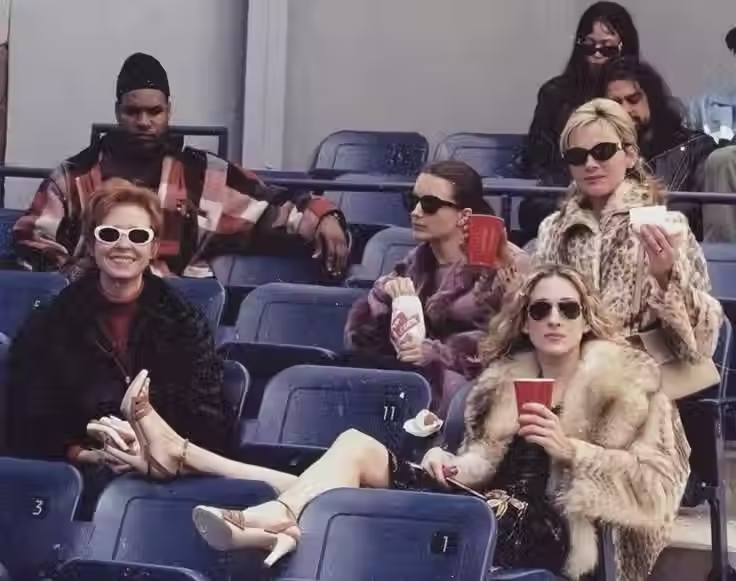The Long Con of Beauty Standards: How Fashion, Exercise, and Diet Trends Trap Us
- Juliette Murer
- Apr 23
- 3 min read
Beauty standards aren’t just some abstract concept, they’re currency. Every shift in what’s "in" isn’t just aesthetic; it’s a full-blown economic cycle designed to keep us spending. The trends we see in fashion silhouettes don’t happen "just because". They’re directly tied to fitness trends, diet culture, and the ever-churning machine of social media influencers who tell us which bodies are aspirational and which are out of style. If you feel like your body is a trend, it’s because it is.

The Fitness-Fashion Pipeline: Why Low-Rise Jeans Are Back (and Why That’s a Red Flag)
The last time low-rise jeans were in, so were razor-sharp hip bones and the What I Eat In a Day videos that could double as starvation plans. The early 2000s were all about heroin chic, pilates arms, and the absolute fear of being "bulky." Now, in 2024, we’re back to eerily similar messaging: low-rise jeans, thinness worship, and the return of Pilates as the workout du jour, promising a "toned but not bulky" physique.
But here’s the scam: Pilates doesn’t "lengthen" your muscles (that’s not how anatomy works), and it’s not the magic key to a viral "Pilates body." But social media and fitness marketing don’t care about biomechanics—they care about selling an image. And that image just happens to align perfectly with the return of low-rise jeans. Coincidence? Never.
Muscle Mommies vs. Pilates Princesses: Pick Your Side, Apparently
For a moment, it seemed like we had broken free from the "cardio bunny" stereotype. Women were lifting heavy, eating high-protein diets, and rejecting the idea that strong = manly. The rise of the "Muscle Mommy" aesthetic was a cultural shift—finally, being fit didn’t mean being as thin as possible.
But now? Enter the "Pilates Princess." Soft-girl aesthetic. Reformers in pastel studios. The implication that lifting weights is aggressive, and that the right kind of woman exercises delicately, gracefully.
TikTok loves a false binary. So now, if you lift weights, you’re a "Muscle Mommy." If you do Pilates, you’re a "Princess." And heaven forbid you exist outside those labels, because the algorithm thrives on extremes. Fitness, once a means of empowerment, is now just another aesthetic war. And the irony? No matter which side you choose, you’re still being sold something.

The High-Rise, High-Protein Era vs. The "Girl Dinner" Era
Remember 2015? High-rise jeans, high-protein diets, lifting culture, "strong is the new skinny." It was the era of What’s your macro split? and fitness influencers who treated chicken breast and broccoli like a personality trait.
Fast forward to now: high-rise is out, low-rise is back, and suddenly, "clean girl" eating habits are just starvation repackaged in an aesthetically pleasing Instagram story. Ozempic-induced weight loss dominates celebrity culture, and TikTok glorifies "girl dinners"—a cute name for eating nothing. Fitness influencers who once preached weightlifting have swapped their protein shakes for matcha and Pilates, reinforcing the shift from strong to delicate.
Fashion changes. Diet trends change. Exercise trends change. But one thing remains the same: there’s always a new ideal being dangled in front of us, and a new industry making money off the chase.
The Long Con of the "Ideal Body"
This cycle isn’t accidental. Fashion, fitness, and diet trends are meticulously engineered to make you feel like you’re almost there, just one more workout, one more supplement, one more pair of jeans away from fitting the mold. But the mold is designed to keep shifting, ensuring you never actually arrive.
So, before you throw out your high-rise jeans and sign up for a $50 Pilates class, ask yourself: Who profits from this trend? Because in six months, the ideal body will change again, and the only constant will be the industries capitalizing on your insecurity.



Comments